Related Research Articles

Dorotea Budimir, better known as Doris Dragović or simply Doris, is a Croatian singer who has represented Yugoslavia in the Eurovision Song Contest 1986 with the song "Željo moja", finishing 11th with 49 points, and Croatia in the Eurovision Song Contest 1999 with the song "Marija Magdalena", finishing fourth with 118 points.

Severina Vučković, better known mononymously as Severina, is a Croatian singer-songwriter and actress. In 2006, the Croatian weekly Nacional listed her among the 100 most influential Croats, calling her "the only bona fide Croatian celebrity".

Styria, also known as Slovenian Styria or Lower Styria to differentiate it from Austrian Styria, is a traditional region in northeastern Slovenia, comprising the southern third of the former Duchy of Styria. The population of Styria in its historical boundaries amounts to around 705,000 inhabitants, or 34.5% of the population of Slovenia. The largest city is Maribor.

Ivan Cankar was a Slovene writer, playwright, essayist, poet, and political activist. Together with Oton Župančič, Dragotin Kette, and Josip Murn, he is considered as the beginner of modernism in Slovene literature. He is regarded as the greatest writer in Slovene, and has sometimes been compared to Franz Kafka and James Joyce.
Kočevski Rog or Kočevje Rog or simply Rog is a karstified plateau in the Kočevje Highlands above the Črmošnjice Valley in southeastern Slovenia. The plateau is part of the traditional Lower Carniola region of Slovenia and of the Dinaric Alps. The highest area is the central part, with the 1099-metre-high peak of Veliki Rog. The plateau is densely forested. The only ski slope in Lower Carniola, Rog-Črmošnjice also lies in the vicinity of Rog.
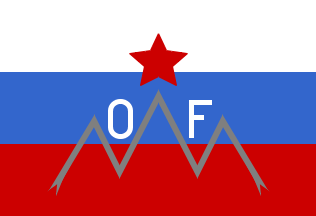
The Liberation Front of the Slovene Nation, or simply Liberation Front, originally called the Anti-Imperialist Front, was a Slovene anti-fascist political party. The Anti-Imperialist Front had ideological ties to the Soviet Union in its fight against the imperialistic tendencies of the United States and the United Kingdom, and it was led by the Communist Party of Slovenia. In May 1941, weeks into the German occupation of Yugoslavia, in the first wartime issue of the illegal newspaper Slovenski poročevalec, members of the organization criticized the German regime and described Germans as imperialists. They started raising money for a liberation fund via the second issue of the newspaper published on 8 June 1941. When Germany attacked the Soviet Union, the Anti-Imperialist Front was formally renamed and became the main anti-fascist Slovene civil resistance and political organization under the guidance and control of the Slovene communists. It was active in the Slovene Lands during World War II. Its military arm was the Slovene Partisans. The organisation was established in the Province of Ljubljana on 26 April 1941 in the house of the literary critic Josip Vidmar. Its leaders were Boris Kidrič and Edvard Kardelj.

Drago Jančar is a Slovenian writer, playwright and essayist. Jančar is one of the most well-known contemporary Slovene writers. In Slovenia, he is also famous for his political commentaries and civic engagement. Jančar's novels, essays and short stories have been translated into 21 languages and published in Europe, Asia and the United States. The most numerous translations are into German, followed by Czech and Croatian translations. His dramas have also been staged by a number of foreign theatres, while back home they are frequently considered the highlights of the Slovenian theatrical season. He lives and works in Ljubljana.

Ulrich II, or Ulrich of Celje, was the last Princely Count of Celje. At the time of his death, he was captain general and de facto regent of Hungary, ban (governor) of Slavonia, Croatia and Dalmatia and feudal lord of vast areas in present-day Slovenia, Croatia, Bosnia, Austria, and Slovakia. He was also a claimant to the Bosnian throne. He was killed by agents of the Hunyadi clan under unknown circumstances, which plunged Hungary into civil unrest that was resolved a year later by the sudden death of king Ladislas the Posthumous and the election of Matthias Corvinus, the son of John Hunyadi and Ulrich's son-in-law, as king. Ulrich's possessions in the Holy Roman Empire were inherited by Emperor Frederick III, while his possessions in Hungary were reverted to the crown.

Gottschee refers to a former German-speaking region in Carniola, a crownland of the Habsburg Empire, part of the historical and traditional region of Lower Carniola, now in Slovenia. The region has been a county, duchy, district, and municipality during various parts of its history. The term often also refers to the entire ethnolinguistic enclave regardless of administrative borders. Today Gottschee largely corresponds to the Municipality of Kočevje. The original German settlers of the region are called Gottschee Germans or Gottscheers, and their German dialect is called Gottschee German or Gottscheerish.

Simona Škrabec is a Slovene literary critic, essayist and translator who lives and works in Barcelona. She spent her childhood in the small town of Ribnica in the region of Lower Carniola. She has lived in Barcelona since 1992. Skrabec has translated several books from Slovenian to Catalan and from Catalan to Slovenian. In addition to these two languages, she is fluent in Spanish, Serbo-Croatian, German, English and French.

Edvard Ravnikar was a Slovenian architect.
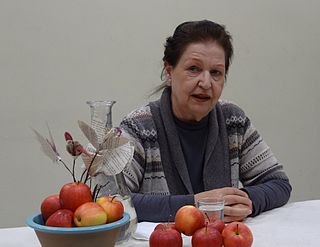
Alenka Puhar is a Slovenian journalist, author, translator, and historian. In 1982, she wrote a groundbreaking psychohistory-inspired book "The Primal Text of Life" about the 19th century social history of early childhood in Slovene Lands, then part of the Austro-Hungarian Empire. The book was in 2010 the subject of a television documentary that was in 2010 televised on the national RTV Slovenija. Her grandfather was the photographer and inventor Janez Puhar, who invented a process for photography on glass.

Irena Kazazić is a Serb-Slovenian visual artist, based in and mainly operating from Ljubljana, with many of her works being presented abroad at international events in Croatia, Italy, United States and Austria. In 2017 she founded her own visual arts vehicle and brand Finer Side of Pop – phrase coined by Serbian writer and art historian Marko Dabetić, and it became a title of subsequent monograph dedicated to Kazazić's work, which saw release in 2020. Currently very active within the artist community of Ljubljana, Kazazić also collaborates with designers, alternative music labels and is known locally for her engagement in cultural and civic activism, including work with refugees and volunteering during 2014 Southeast Europe floods in Obrenovac, Serbia. In 2015. she curated a public exhibition of urban artists for Ulična galerija, which utilized public spaces as exhibition sites. She was admitted into Ljubljana Fine Artists Society in 2021.
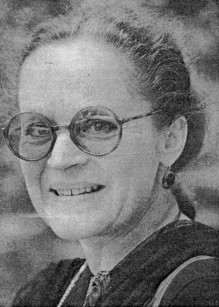
Berta Bojetu was a Slovene writer, poet and actress.

Tone Partljič is a Slovene writer, playwright and politician. Between 1990 and 2004 he was a member of the Slovenian National Assembly, from 1994 as a member of the LDS party. He was also president of the Slovene Writers' Association between 1983 and 1987.
Jani Virk is a Slovene writer, poet, translator and editor. He writes poetry, short stories, essays, novels and scripts and translates from German into Slovene.
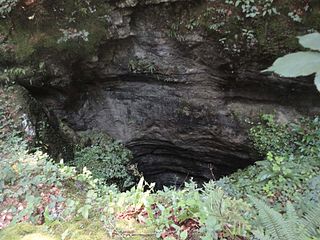
The Kočevski Rog massacre was a series of massacres near Kočevski Rog in late May 1945 in which thousands of members of the Nazi Germany–allied Slovene Home Guard were executed, without formal charges or trial, by special units of the Yugoslav Partisans; other victims were Croat, Serb and Montenegrin collaborationists as well as much smaller numbers of Italian and German troops.
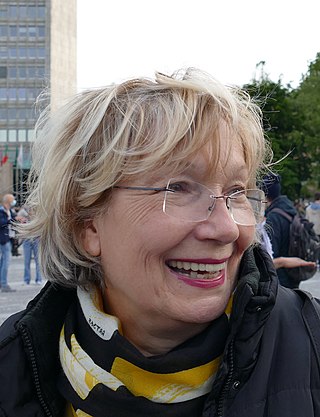
Alenka Sottler is a Slovene painter and illustrator. She lives and works in Ljubljana as a freelance illustrator and is a member of New York Society of Illustrators. She has illustrated over 50 books for children and adults, for which she received numerous awards and honours including her second nomination for the Hans Christian Andersen Award in 2014.
Wang Huiqin is a Chinese-Slovenian artist: painter, calligrapher, book illustrator and author.
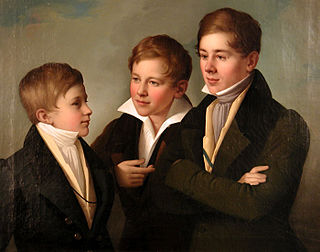
Art of Slovenia refers to all forms of visual art in or associated with Slovenia, both before and after the country's Independence from Yugoslavia in 1991. Art in Slovenia has been shaped by a number of Slovenian painters, sculptors, architects, photographers, graphics artists, comics, illustration, and conceptual artists. The most prestigious institutions exhibiting works of Slovene visual artists are the National Gallery of Slovenia and the Museum of Modern Art in Ljubljana.
References
- ↑ "Writers: Lela B. Njatin". Slovene Writers' Association . Archived from the original on 2 March 2024. Retrieved 4 September 2024.
- ↑ "Lela B. Njatin" (PDF). Hrvatski PEN centar. 2006. Archived (PDF) from the original on 3 March 2016. Retrieved 4 September 2024.
- ↑ Slovenian Book Agency website [ permanent dead link ]
- ↑ "Search: Artist: Njatin B., Lela". Museum of Modern Art (Ljubljana) (in Slovenian). Archived from the original on 1 November 2022. Retrieved 4 September 2024.
- ↑ "Lela B. Njatin: Ker mi nismo le podobe, smo ljudje" [Lela B. Njatin: Because we are not just images, we are people]. Rokodelski center Ribnica (in Slovenian). 2019. Archived from the original on 1 November 2022. Retrieved 4 September 2024.
- ↑ "Lela B. Njatin. Ker mi nismo le podobe, smo ljudje. 2005–2020" [Lela B. Njatin. Because we are not just images, we are people. 2005-2020]. Pilonova Galerija (in Slovenian). 2021. Archived from the original on 3 March 2024. Retrieved 4 September 2024.
- ↑ "Prints and Impressions 2". International Centre of Graphic Arts (Ljubljana) . 2022. Archived from the original on 4 May 2024. Retrieved 4 September 2024.